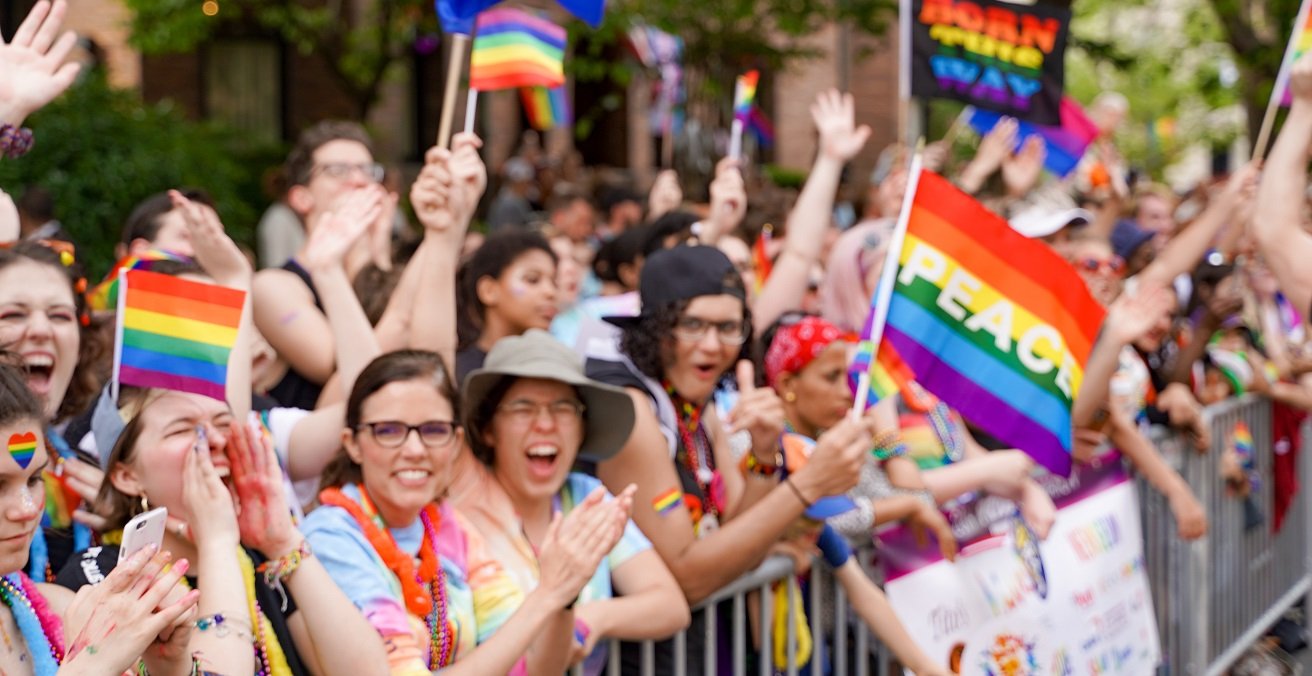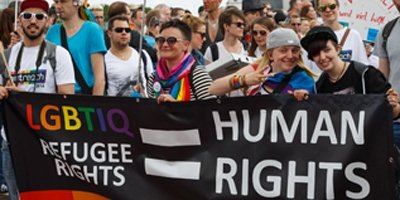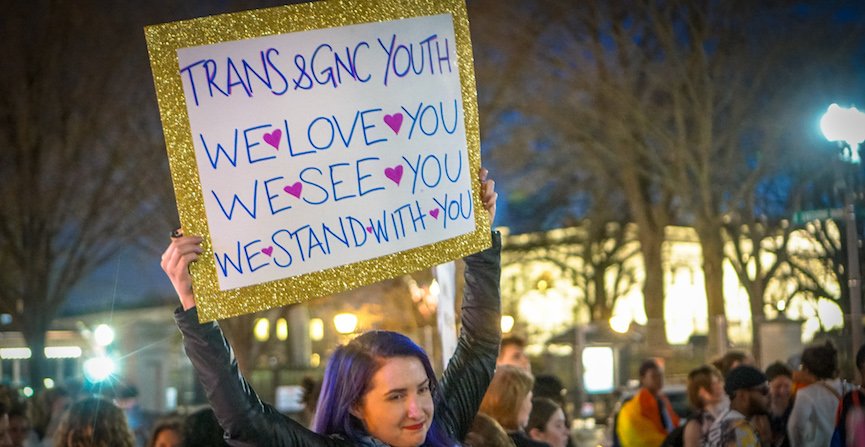In the vast tapestry of human existence, faith and fear have long danced hand in hand, each influencing the other in a mesmerizing choreography of emotions. But for those who identify as LGBTQ+ in religiously conservative countries, this dance takes on a perilous dimension. It is within the confines of these nations immersed in deep-rooted religious beliefs that this article delves, exploring the intricate tapestry of LGBTQ+ safety and the challenges faced by individuals who dare to embrace their true selves. From the shadows of secrecy to the glimmers of hope, we embark on a journey that unveils the unyielding struggle for acceptance, understanding, and equality in these societies where faith and fear intertwine.
Table of Contents
- Exploring the Intersection Between LGBTQ+ Identity and Religious Beliefs
- Understanding the Challenges Faced by LGBTQ+ Individuals in Religious Countries
- Promoting Safety and Inclusivity: Strategies for Religious Organizations
- Advocacy and Support: Amplifying LGBTQ+ Voices in Religious Contexts
- Building Bridges: Promoting Dialogue and Understanding between Religious and LGBTQ+ Communities
- Q&A
- In Conclusion

Exploring the Intersection Between LGBTQ+ Identity and Religious Beliefs
In recent years, there has been a growing interest in . This fascinating topic delves into the complex relationship between two crucial aspects of many individuals’ lives – their sexual orientation or gender identity and their spiritual or religious affiliations.
One important aspect of this exploration is to understand the diverse range of experiences within the LGBTQ+ community. While some individuals might find acceptance and affirmation within their religious communities, others might encounter resistance, discrimination, or even rejection. It is crucial to acknowledge and respect these varying experiences, affirming the complexity and diversity of lived realities.
This intersection also raises challenging questions that prompt introspection and critical thinking. How do religious traditions interpret and respond to LGBTQ+ identities? Can one be both queer and devout? Individuals might grapple with their personal beliefs and navigate reconciling or renegotiating their LGBTQ+ identity in light of their religious teachings or vice versa. These intricate and deeply personal journeys deserve understanding, empathy, and support.
Key points to consider:
- The diverse range of experiences LGBTQ+ individuals have within their religious communities
- Challenging questions regarding the interpretation of religious teachings in relation to LGBTQ+ identities
- The nuanced and deeply personal journeys individuals undertake in reconciling their LGBTQ+ identity with their religious beliefs
The exploration of the intersection between LGBTQ+ identity and religious beliefs is a multidimensional and evolving conversation. It calls for open-mindedness, respectful dialogue, and a commitment to fostering inclusivity and understanding for all.

Understanding the Challenges Faced by LGBTQ+ Individuals in Religious Countries
In many religious countries, LGBTQ+ individuals face unique and often daunting challenges that arise from the intersection of their sexual orientation or gender identity and the prevailing religious beliefs and practices. These challenges can have profound impacts on their personal, social, and mental well-being. It is important to acknowledge and address these issues to promote inclusivity and equality for all members of society.
The stigma and discrimination: LGBTQ+ individuals living in religious countries often encounter deep-rooted stigma and discrimination due to religious teachings that may label their identities as sinful or immoral. They may face rejection and condemnation from their families, religious communities, or even be subjected to verbal, physical, and psychological abuse. This discrimination leaves many LGBTQ+ individuals feeling isolated, marginalized, and vulnerable.
Legal barriers and constraints: Religious countries may enforce strict laws and policies that directly or indirectly criminalize same-sex relationships or gender non-conformity. These legal barriers can restrict LGBTQ+ individuals’ ability to express themselves freely and openly, leading to a constant fear of persecution or legal repercussions. The lack of legal protections also hinders their access to vital resources, healthcare, education, and employment opportunities.
Limited support systems: LGBTQ+ individuals face considerable challenges in finding support systems within religious communities, where acceptance and understanding can be scarce. Many religious institutions adhere to traditional teachings and doctrines that denounce homosexuality or transgender identities, making it difficult for individuals to reconcile their faith with their true selves. Finding inclusive support networks and safe spaces becomes crucial for LGBTQ+ individuals to navigate their journey and find the much-needed community and acceptance they deserve.

Promoting Safety and Inclusivity: Strategies for Religious Organizations
Religious organizations play a crucial role in shaping communities and providing a sense of belonging for individuals of different backgrounds and beliefs. To ensure a safe and inclusive environment, here are some effective strategies that can be adopted:
1. Education and Awareness
Encourage ongoing education and awareness programs within the organization to promote understanding, respect, and inclusivity. Offer workshops, seminars, or guest speakers to address topics such as diversity, discrimination, and bystander intervention. This will help members gain a deeper understanding of various cultures and religions, fostering an atmosphere where everyone feels valued and accepted.
2. Establish Safe Spaces
Create designated safe spaces within your organization where individuals can feel comfortable expressing their views and seeking support. These spaces can act as a sanctuary for those facing discrimination, allowing them to share their experiences and find solace. Designate a confidential helpline or an email address for reporting incidents of discrimination or harassment, ensuring that individuals feel heard and supported.
3. Collaborate and Engage
Forge connections with local community organizations, interfaith groups, and other religious institutions to promote collaboration and mutual understanding. This can involve joint events, discussions, or social gatherings that encourage dialogue and the sharing of diverse perspectives. By actively engaging with other communities, you can foster an environment that celebrates religious diversity, breaks down stereotypes, and promotes unity.
Remember, promoting safety and inclusivity in religious organizations is an ongoing journey that requires continuous effort and commitment. By implementing these strategies, you can create a supportive and welcoming environment for all individuals, regardless of their religious beliefs or backgrounds.
Advocacy and Support: Amplifying LGBTQ+ Voices in Religious Contexts
Within religious contexts, it is essential to create spaces that amplify the voices of LGBTQ+ individuals and provide support for their unique experiences. This advocacy and support is crucial for fostering inclusivity, understanding, and acceptance within religious communities. It is an opportunity to challenge preconceived notions, mitigate discrimination, and build bridges of empathy and compassion.
To effectively amplify LGBTQ+ voices in religious contexts, a multi-faceted approach can be employed:
- Educational Initiatives: Providing educational resources, workshops, and seminars that educate religious communities about LGBTQ+ identities, experiences, and issues. This fosters a more inclusive environment where dialogue and understanding can flourish.
- Safe Spaces: Establishing safe environments within religious institutions where LGBTQ+ individuals feel welcomed, valued, and supported. This includes offering counseling services, support groups, and pastoral care that address the unique challenges and concerns faced by LGBTQ+ individuals.
- Advocacy Efforts: Actively advocating for LGBTQ+ rights and equality within religious institutions and working towards dismantling discriminatory practices and policies. This involves engaging in public advocacy campaigns, challenging harmful theology, and promoting a more affirming interpretation of religious texts.
By actively advocating for and supporting LGBTQ+ individuals within religious contexts, we can promote a more inclusive, compassionate, and genuinely spiritual environment. This work requires a commitment to challenging biases, affirming the diverse identities of LGBTQ+ individuals, and fostering a space where everyone feels affirmed in their faith and sexuality.
Building Bridges: Promoting Dialogue and Understanding between Religious and LGBTQ+ Communities
Creating a safe space for open dialogue and fostering mutual understanding between religious and LGBTQ+ communities is essential in building bridges towards empathy and acceptance. By addressing the misconceptions and biases that exist on both sides, we can work towards a more inclusive society where diversity is celebrated.
Challenging Stereotypes: It is important to recognize that not all religious individuals hold negative views towards the LGBTQ+ community, just as not all LGBTQ+ individuals reject religion. By acknowledging and challenging stereotypes, we can move beyond assumptions and begin to truly understand one another’s beliefs and experiences.
Creative Dialogue Platforms: Creating events, workshops, and panels that encourage open conversation can provide a safe environment for individuals from religious and LGBTQ+ communities to share their perspectives and engage in respectful discussions. These platforms can foster understanding by allowing participants to ask questions, gain insights, and promote empathy.
Education and Outreach: Providing education and resources that address the intersectionality of religion and LGBTQ+ identities can play a significant role in promoting dialogue and understanding. This can include workshops on religious teachings and LGBTQ+ issues, accessible online resources, and community outreach programs aimed at fostering empathy and dispelling misconceptions.
By recognizing the shared values of love, compassion, and acceptance that exist in both religious and LGBTQ+ communities, we can work towards a future where bridges of understanding are built, allowing for genuine dialogue and coexistence.
Q&A
What is the significance of discussing LGBTQ+ safety in religious countries?
Understanding the state of LGBTQ+ safety in religious countries is essential as it highlights the challenges faced by this community. It encourages dialogue and promotes efforts to foster acceptance and respect for all individuals, irrespective of their sexual orientation or gender identity.
Do LGBTQ+ individuals face greater risks in religious countries?
Yes, unfortunately, LGBTQ+ individuals often encounter increased risks due to societal prejudices and discriminatory laws in many religious countries. These individuals may face persecution, violence, and legal consequences solely based on their sexual orientation or gender identity.
What role do religious beliefs play in LGBTQ+ safety?
Religious beliefs can greatly impact LGBTQ+ safety. While some religious communities have become more inclusive and accepting, others maintain conservative stances that perpetuate discrimination. Ensuring LGBTQ+ safety in religious countries requires navigating the often complex relationship between religious doctrines and the promotion of equality and human rights.
Can religious teachings be reconciled with LGBTQ+ acceptance?
There are ongoing debates and discussions around reconciling religious teachings with LGBTQ+ acceptance. Some religious leaders and communities have interpreted their religious texts in a way that affirms and embraces LGBTQ+ individuals, while others struggle to find common ground. This ongoing dialogue is crucial in promoting understanding and fostering a more inclusive environment.
What are some initiatives aimed at improving LGBTQ+ safety in religious countries?
Numerous initiatives focus on improving LGBTQ+ safety in religious countries. These include education programs that aim to challenge stereotypes, advocacy for legal reforms, and promoting dialogue between religious leaders and LGBTQ+ communities. Such initiatives strive to create spaces where religious beliefs can coexist with respect and acceptance for LGBTQ+ individuals.
What is the role of governments in protecting LGBTQ+ individuals in religious countries?
Governments play a vital role in protecting LGBTQ+ individuals in religious countries. They must address discriminatory laws, implement policies promoting tolerance and inclusivity, and enforce measures against hate crimes. Additionally, fostering dialogue between religious institutions and governments can help create an environment that protects the rights and safety of LGBTQ+ individuals.
What can allies and individuals around the world do to support LGBTQ+ individuals in religious countries?
Supporting LGBTQ+ individuals in religious countries begins with educating oneself about the challenges they face. Individuals can show support by amplifying their voices, engaging in respectful dialogue, and advocating for change within their own communities. Solidarity and empathy can go a long way in creating a more inclusive and accepting world for all.
In Conclusion
In a world where faith and fear often collide, the safety of LGBTQ+ individuals in religious countries remains a complex issue. This delicate dance between deeply-rooted beliefs and the pursuit of inclusivity challenges both the faithful and the marginalized. While some may see these conflicting forces as irreconcilable, it is essential to shed light on the stories and experiences that push the boundaries of these seemingly opposing realms.
By examining the intersection of LGBTQ+ identities and religious landscapes, we navigate through uncharted territory where compassion, understanding, and acceptance take center stage. This exploration reveals a tapestry of narratives that challenge stereotypes and compel us to question our own prejudices.
It is crucial to recognize the immense progress made in recent years, as religious communities increasingly open their doors to those who identify as LGBTQ+. These acts of inclusion not only celebrate the inherent dignity of all individuals but also reaffirm the essence of any spiritual journey: love, understanding, and growth.
Nonetheless, the fabric of society remains woven with discrimination and fear, often making it difficult for LGBTQ+ individuals to find solace within their respective faith communities. The struggle for acceptance can be debilitating, forcing many to reconcile their religious beliefs with their sexual orientation or gender identity, a process that tests the very essence of their faith.
Yet, stories of resilience and hope emerge amidst these challenging circumstances, providing a glimmer of light in the darkness. The unwavering spirit of those who navigate the stormy waters of faith and fear highlights the power of the human spirit to transcend the confines of dogma and bigotry.
As we ponder the delicate balance between faith and fear, we must remember that progress comes hand in hand with education. It is through open dialogue, compassion, and enlightenment that we pave the way towards a more inclusive future for LGBTQ+ individuals across religious countries.
By fostering an environment where understanding and acceptance thrive, we create spaces where individuals can embrace their faith and their true selves without fear or judgment. The journey from segregation to unity is not a simple or linear one, but by shedding light on the unique struggles faced by LGBTQ+ individuals in religious countries, we can take bold steps towards fostering a more compassionate and tolerant world.
As we continue down this winding path, let us honor the stories of those who faced adversity with unyielding courage, transforming faith and fear into a powerful force for change. Only then can we truly celebrate the diversity of human experience, and create a world where every individual, regardless of their sexual orientation or gender identity, finds sanctuary within their chosen faith.
As an affiliate, my content may feature links to products I personally use and recommend. By taking action, like subscribing or making a purchase, you’ll be supporting my work and fueling my taco cravings at the same time. Win-win, right?
Want to read more? Check out our Affiliate Disclosure page.